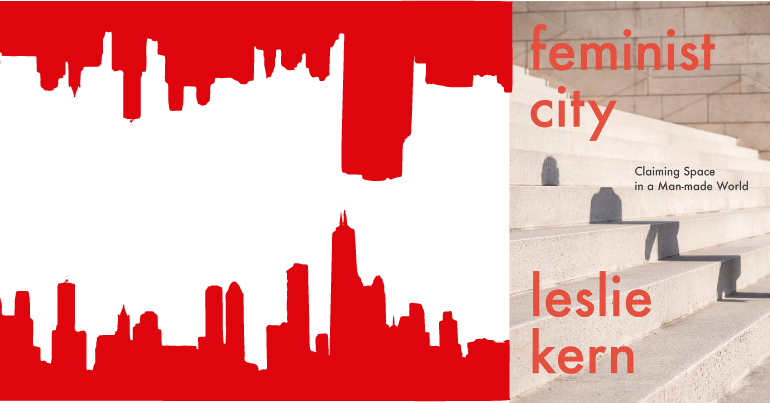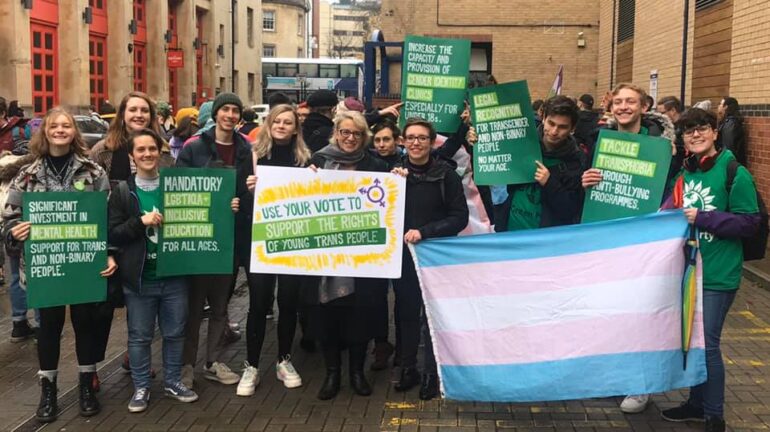Girls to the front: Feminist City by Leslie Kern
Cities have historically been painted by urban planners and governments as places of opportunity and excitement, where somebody can reshape the trajectory of their life. Positive attributes of cities include being ‘global’ and ‘liberal’, but how do these cities actually cater to people who are not cisgender, white, straight men?
The plight of minoritised individuals in urban landscapes is long overdue some exposure in mainstream geographical literature, and Leslie Kern’s Feminist City, published in 2020 by Verso Books, proves to be an essential starting point for any budding feminist geographers to learn more about how women, people of colour, queer people, and disabled people can be better catered for in an increasingly urbanised world.
Cities and gender
“A woman’s place is the city” is one of the key messages Leslie Kern returns to throughout her feminist utopian handbook. Cities have been hostile places for everybody but the cisgender, white, able-bodied man for millennia and to counter this, Kern establishes her intersectional agenda throughout her trailblazing book on feminist geography and urban theory.
Drawing references from classic fiction, pop culture, and academic writing, Kern creates parallels between the likes of Sex and the City, the works of Virginia Woolf, Broad City, and theories from feminist geographers such as Gill Valentine, Sally Munt, and Jane Darke. In doing so, she creates an incredibly accessible manifesto for budding feminist urbanists everywhere, while opening up a space to discuss urban planning in terms of marginalised groups rather than just her perspective as a white, middle class woman. Consistently referring to and being critically aware of her privilege while also writing frankly about her struggles make Kern an excellent example of a writer who wants to amplify marginalised voices.
Kern claims that “geography adds a fascinating dimension to feminist analysis”, indicating that feminism is as important spatially as it is culturally. Kern also never takes an issue at face value – robust analysis is peppered throughout the book, making you as a reader question your own ability to roam a city freely and the nuances that come with that. For example, as a white, cisgender woman without any physical disabilities, I am able to drift relatively unnoticed through a crowded city. Kern would describe me as a flaneuse, the female version of the French flaneur – a man who roams and observes a city, and to be so is an immense privilege.
In spite of this, the threat of sexual violence is something I am acutely aware of wherever I go. Kern has a similar perspective, however she tries to regularly remind the reader how different people interact with cityscapes in terms of gender, race, sexuality, and disability.
Mothering in the city
A noticeable flaw with Kern’s analyses however is that she occasionally misplaces her own experiences. She over-focuses on her experience as a relatively privileged white woman and lacks an in-depth critique of her position of privilege. For example, she writes about being a woman in activist spaces, while not acknowledging how a queer woman of colour for example would be interacting with their surroundings in a very different way.
Kern is not without experience in the issues she writes about. Being a single mother who has lived in both London and Toronto, she has had her fair share of difficulties accessing public services that an able-bodied cis man would have no second thoughts about. As women with children in tow, how are we expected to navigate a transit network void of elevators, ramps and space with children in tow? Why is childcare provision not considered in new housing developments? Do childcare collectives need to be the future of urban living for single mothers?
Upon reflection though, the pressing questions relating to mothers and children do bear a lot of similarities to the demands disabled activists have been making in cities for decades. Kern acknowledges this, but perhaps should have paid homage to the work being done by people who need accessible cities regardless of children being present.
Gentrification is deemed as the perpetrator, driving mothers away from safe spaces within the city. Spaces where one would feel safe to breast-feed have closed and been replaced by trendy cafes or high-end gyms – further forcing people who breast-feed their children to the periphery of society. Disappointingly, Kern seems to not acknowledge the experience of motherhood different to her own and fails to consider the added difficulties that may arise due to disability or race. However, adding motherhood to the argument strengthens Kern’s argument for gender-mainstreaming policies in urban planning.
Urban friendship
‘City of Friends’ is the chapter I related to the most, as I am sure many other young women would. Female friendships are truly fundamental in many a young girl’s adolescence, and for Kern to suggest that cities should be designed for young girls to claim their own space together is revolutionary. Young girls reclaiming public spaces like shopping centres is a revolutionary act in itself, but Kern also highlights that this is only really done by groups of young white girls, whereas young black girls, for example, were even more ostracised by their white counterparts and driven out of the malls, thus leaving them more vulnerable to being targeted by police for loitering.
Kern also refers to how gentrification is driving many women, especially queer women, out of areas where they feel comfortable to gather and socialise. Traditionally queer spaces which were reactions to historic repression become the target for development and drive away the people who live and socialise there. As argued in ‘Planning as a Heterosexist Project’ by Michael Frisch, society often focuses on keeping queer spaces for queer men, and not as much focus on queer and trans women along with non-binary people. Kern addresses this well and it would be interesting to see her write in more detail on spaces for queer women in particular.
Existing alone in a city is cited as being an exciting and invigorating experience but also in turn very isolating and vulnerable. Kern discusses that cities are not built for individuals to thrive, especially not individual women. This is especially true for the trans community, black women and people with disabilities, since simply existing is seen as a resistance. For example, black women regularly get questioned for browsing in shops and accused of shoplifting. Kern refers to the case of two black men in a Philadelphia Starbucks who were arrested for not buying anything while they waited for a friend. Trans women are shunned from using the bathrooms they identify with. Disabled people are left without accessible public services in cities designed by able-bodied planners. To further strengthen this point Kern should really have included more perspective from the Global South, as comparatively cities in the Global North are presented as safer by their residents.
Protesting space
Perhaps the most poignant chapter to me was on protest. Since moving to a city myself for university I found a whole world of revolutionary action in front of me. Attending protests was something I didn’t think twice about. However after reading Kern’s self-criticism of herself as a white woman taking up valuable space and voice at protests I seriously re-evaluated what it meant to be an activist in a city rather than from my sofa in the Lake District.
Historically protests have been organised by marginalised communities as a reaction to institutionalised oppression, but Kern recalls attending protests during her time at university in Toronto, where they were overwhelmingly co-opted by white men. Kern also points out how activist labour is gendered: men do the revolutionary work while women make the hot drinks and look after the protesters’ wellbeing. Fundamentally this undermines the entire point of activism, as it should be a space for people of all genders to unite against a common enemy. But time and time again, protest spaces become dominated by men and leave others to micro-manage and delegate care-taking tasks.
Fear and possibility in the city
“Women cannot be fearful of men all of the time, therefore in order to maintain an illusion of control over their safety they need to know where and when they may encounter ‘dangerous men’ in order to avoid them.”
Kern is right to assert that fear is spatial as much as it is emotional. In many crime surveys women state that their biggest fears are men, but men in general are difficult to avoid. As a result, women subconsciously avoid places associated with dangerous men such as dark alleyways and empty train stations. What is important to acknowledge, however, is that a chapter on fear written by a white woman needs to be written in solidarity with other marginalised groups rather than from direct experience. There are multiple testimonies of safety written by white women, but there are many more dimensions to fear in an urban environment for a woman of colour, queer woman, or disabled woman. This is because cities are no better built for other oppressed groups than they are for white women, so more acknowledgement of this is necessary.
Despite the quite stark reality of living as a woman in a city, Kern does highlight at the end of the book that cities are places of possibility. Feminist City urges women to take up space in their environments and not to be afraid of the unknown. This is a powerful message to young women who are making their first forays into the urban world, and learning not to be afraid of a city is a very liberating thing. We just need to acknowledge the barriers to this and by uniting minoritised groups against a shared struggle, we can create a truly intersectional and functional urban space.




Leave a Reply